Last Updated on October 29, 2025 by Cassandra Gambill | Published: July 10, 2019
Drive from San Sebastian out to the idyllic Basque countryside beyond city limits, and suddenly you’ll find yourself in another world. As the landscape gets even more lush and green and the sounds of Spanish are slowly but surely overtaken by those of Basque, keep an eye out for the fluffy white latxa sheep that call this region home. Once you see them, you can be sure you’re in Idiazabal country.
While manchego may get all the credit when it comes to Spanish queso, Idiazabal cheese is giving its better-known Castilian counterpart a run for its money. From its humble roots in rolling green pastures, to the bustling pintxos bars of San Sebastian and Bilbao, to a place of honor among the handpicked ingredients at some of the Basque Country’s most highly revered restaurants, it’s making waves in its home region and beyond.
Need a primer? Here’s everything you need to know about your new favorite cheese.
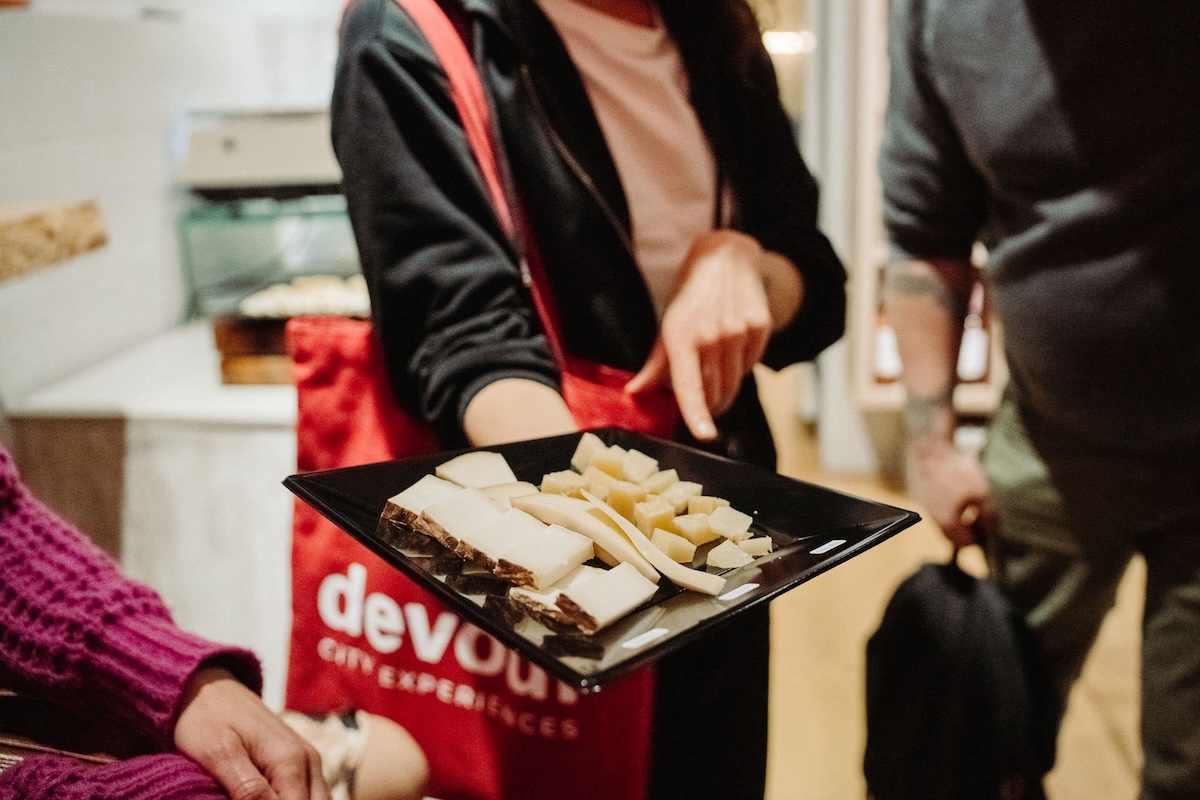
Idiazabal Cheese 101: History & Characteristics
At first glance, it may seem that the story of Idiazabal cheese—pronounced “ee-dee-a-THA-bahl”—is relatively short. The denominación de origen was only established in 1987, with the goal of finally putting a name to the product that inhabitants of the Basque Country and Navarra have enjoyed for millennia.
That’s right: the principles of Idiazabal cheese have remained virtually unchanged for more than 8,000 years. Even the Basque shepherds who raise the latxa sheep that provide the milk for the cheese still follow the same ancient pastoral routes.
And just what, exactly, are these age-old guidelines to which Idiazabal cheese still adheres? According to the D.O. Queso Idiazábal official website, in order to earn the prestigious label, a cheese must:
- Be produced (both the milk and the cheese itself) in the Basque Country or Navarra, excluding the zone known as the Roncal Valley—if it’s produced here, it’s Roncal cheese, not Idiazabal!
- Only use milk from the latxa and carranzana breeds of sheep, without mixing or pasteurizing
- Age for a minimum of two months
- Contain a minimum of 45 percent fat
- Pass a series of sanitation and sensory tests
- If selected based on the above criteria, the final product must include a number on its rind
The result: a smoky, buttery, nutty cheese with a pale yellow color that tastes great on its own with wine, or as a special ingredient in any number of dishes.
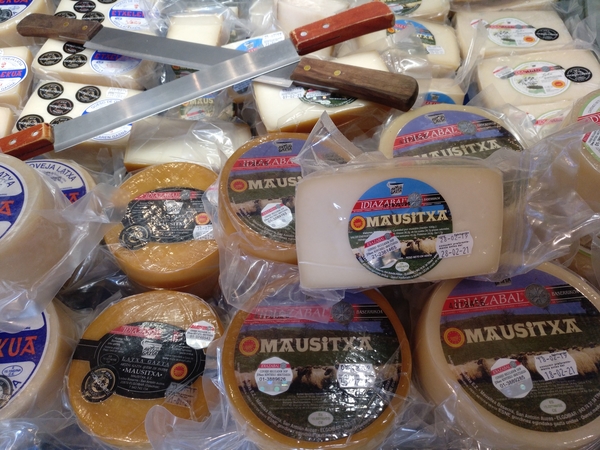
Experiencing Idiazabal cheese today
If you’re looking to enjoy this renowned local cheese straight from the source, rent a car—some of these remote rural areas are difficult if not impossible to access on public transportation—and set out on one of the most unconventional day trips from San Sebastian. The Idiazabal Cheese Route consists of a smattering of villages dotting the Basque countryside linked by a series of walking trails. It’ll take you around six days to complete the full circuit, but if you’re short on time, just focus on one or two stops—you can’t go wrong with any of them.
Complete with breathtaking mountain scenery and pastoral medieval towns, the route gives you an up-close-and-personal look at the makings of Idiazabal cheese, from the age-old shepherds’ trails, to the humble dairies where the prized product is made, to the busy farmers’ markets where it’s hawked from the stalls.
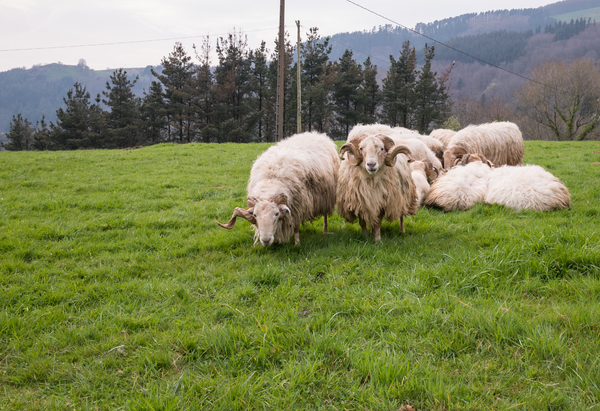
Can’t make it out to the rural homeland of Idiazabal cheese? No problem—if you’re in San Sebastian, swing by Ibéricos Deluxe and say kaixo to our friend Ismael Martínez, who certainly knows his stuff when it comes to all things meat- and cheese-related.
We asked Ismael for his suggestions of things to know before buying Idiazabal cheese at a gourmet shop such as Ibéricos Deluxe.
“The cheese tends to cost between €25 and €35, and weighs usually around one kilo, 100 grams,” Ismael said. “Most of what you’ll find is semi-cured, but each cheesemaker produces both natural and smoked cheeses. People really tend to like the smoked kind a lot.”
Not sure which of the many varieties to take home? According to Ismael, the best cheese in stock is the Mausitxa brand, without a doubt.
“Mausitxa gets entered into Idiazabal cheese contests every year, and it usually wins. Then they take the cheeses that have won the contest and give them the special ‘black label,'” Ismael said. “It’s more expensive, but very good quality.”
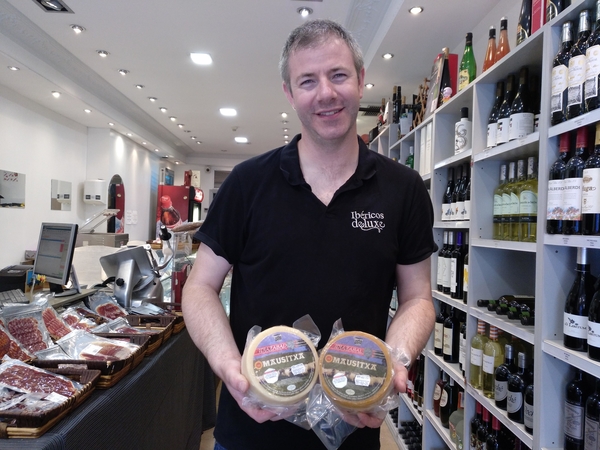
But once you have your cheese and are ready to enjoy it, what’s the best way to do so?
“A typical dessert here in the Basque Country is local cheese with a bit of quince paste and walnuts on the side. The combination of flavors gives it a really special taste,” said Ismael. “You can even grate it over pasta, or melt it on top of toast for breakfast.”
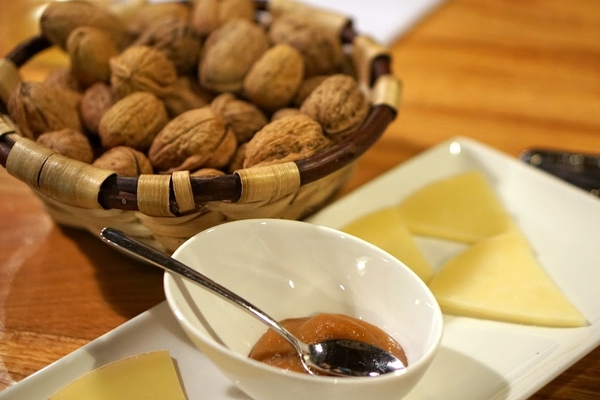
Moving towards the future
Let’s face it: this is the Basque Country, home to some of the most avant-garde and innovative cuisine in the world. It’s already being used as the star ingredient in contemporary pintxos and even in many dishes at the various Michelin restaurants in San Sebastian—a phenomenon that surely will only become more common as the cheese becomes better-known throughout Europe and the world.
Even the way the cheese is produced is among the most innovative on the planet. The denominación de origen recently unveiled a revolutionary tool that will help determine the genetic origin of the milk used, thus further ensuring top quality. As a result, it’s the first cheese D.O. in Europe to be able to implement advanced quality control systems based on genetic analysis.
But let’s leave the complicated technology to the producers themselves. For now, we’re more than happy to simply enjoy every last bite of Idiazabal cheese we devour.
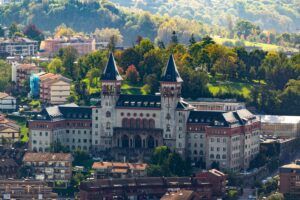
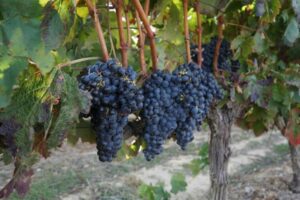






Thanks for this great article. San Sebastian is one of my favorite towns, and I’ve been there many times. I am again bringing a group to San Sebastian next month for the Film Festival (our 5th Film Fest trip), and I’m always looking for good new restaurants and local experiences. Please send me your Insider’s Guide to eating in San Sebastian.
Sent! Sounds like it’s going to be a lovely trip!